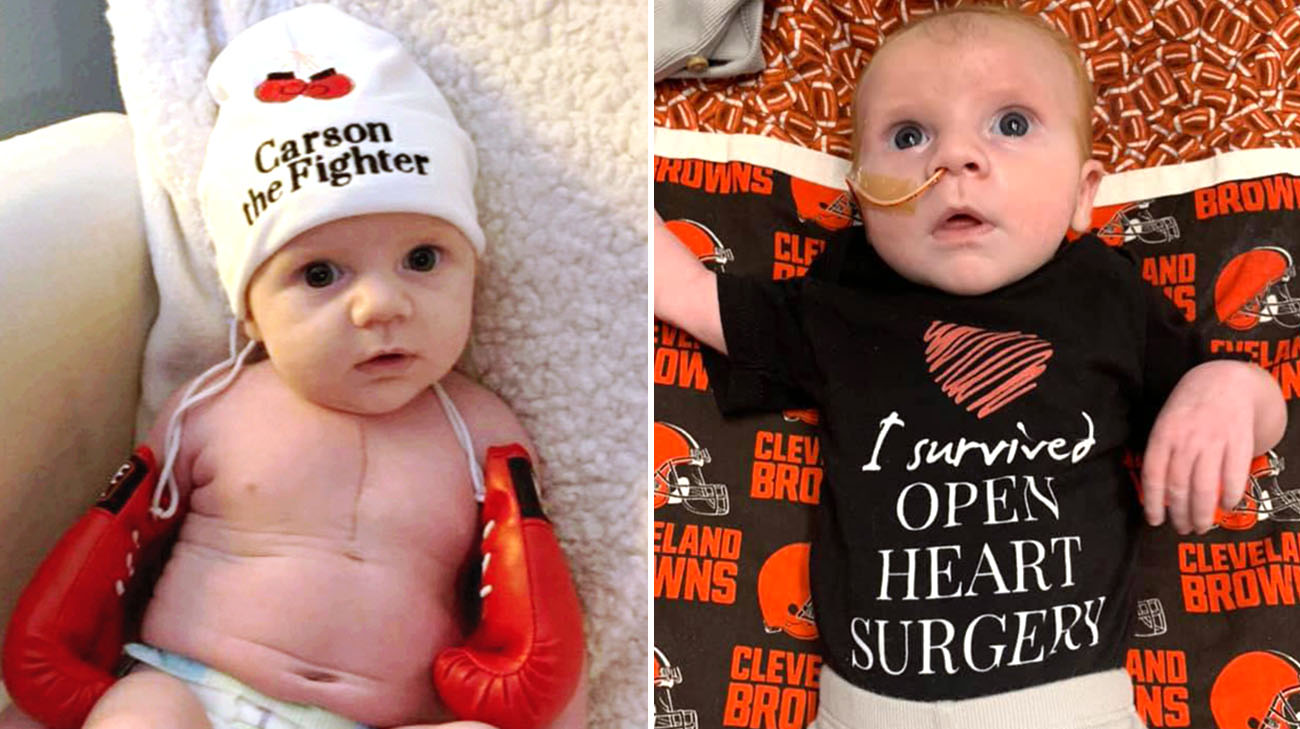
Not yet 1 day old, Carson Erdman faced an uncertain future. “He was in an incubator, with lines and wires all over him. Nurses and doctors were all around him,” recalls Carson’s mother, Kari, who gave birth to him via emergency Cesarean section on October 1, 2019.
“I will never forget that moment. Looking at our precious baby, not even 24-hours old and not knowing if he would make it.”

Doctors diagnosed Carson with a severe congenital heart defect called aortic stenosis. His mother, Kari, and father, Drew, haven't left his side throughout his medical journey. (Courtesy: Kari Erdman)
Nearly five months later and following three heart procedures, Carson not only survived but is thriving.
Doctors diagnosed him with a severe congenital heart defect called aortic stenosis. It’s a narrowing of the aortic valve opening which limits blood flow through the heart. Carson underwent his first procedure, a balloon aortic valvotomy, shortly after being born. When his condition didn’t improve, he was transferred to Cleveland Clinic Children’s 13 days after birth.
Around one week later, pediatric cardiovascular surgeon Hani Najm, MD, performed Carson’s second procedure called an open aortic valvotomy which involves enlarging the aortic valve to improve blood flow to the left ventricle and strengthen the heart.
“While these types of procedures can be high-risk, our primary goal in babies born with critical congenital anomalies is to make sure we preserve the function of the heart to avoid a transplant,” explains Dr. Najm.

Carson, with his sister, Aubree, after undergoing his second heart procedure. (Courtesy: Kari Erdman)
Carson recovered well from the six-hour surgery. Following additional weeks of recovery in the pediatric intensive care unit (PICU), Carson finally went home and spent his first Thanksgiving with Kari, his father, Drew and his 4-year-old sister, Aubree.
While Carson’s heart improved slightly, follow-up examinations conducted by pediatric cardiologists including Shahnawaz Amdani, MD, revealed a moderate leak in his mitral heart valve. Additionally, his left ventricle, which had been working harder to overcome the initial blood flow issue, remained problematic.
Carson's cardiologists wanted him to have the most effective but least invasive repair as possible. And while he improved, it wasn’t to the point where his heart could fully recover and he could grow normally. The Ross-Konno procedure would fix the leaky mitral valve and remove some scar tissue from the left ventricle.

By 3 months old, Carson underwent three heart procedures to help repair his aortic stenosis. (Courtesy: Kari Erdman)
A Ross-Konno operation involves removing the damaged aortic valve and replacing it with the patient’s healthy pulmonary valve. This happens after the surgeon enlarges the aortic annulus by cutting the septum and resecting part of the obstructive muscle. The pulmonary valve is replaced with a homograft, which is tissue from a human donor. This type of surgery is a very intricate procedure, especially performed on someone as young as Carson.
Additionally, after enlarging the left ventricular outflow tract to enhance blood flow. Dr. Najm removed the endocardial fibroelastosis (EFE) tissue that was impacting ventricular relaxation and contraction. The entire surgery lasted nine hours.
“Carson’s heart function has already dramatically improved compared to before the surgery,” notes Dr. Najm. “I believe his outcome is going to be bright.”

Carson turned 4 months old on February 1, 2020. (Courtesy: Kari Erdman)
Carson's doctors say he may need some minor procedures in the future, but they expect him to live a relatively normal and active life. They add he's gaining weight, eating, has good color, is vigorous and is laughing and playing. Carson is doing all the things he should.
Kari believes likewise. “We are thankful for each and every day, and every milestone Carson reaches is a blessing,” she exudes. “We look forward to Carson’s future and watching him grow.”
Related Institutes: Cleveland Clinic Children's

